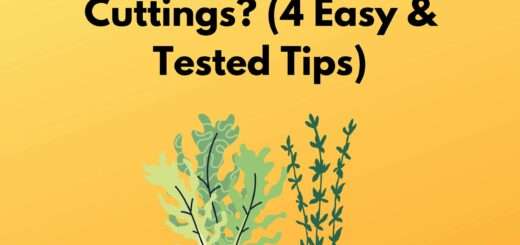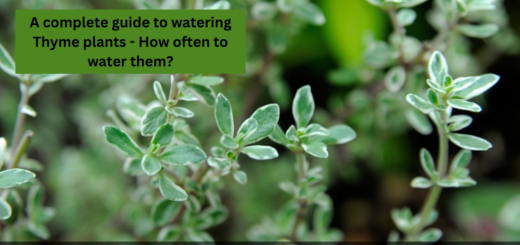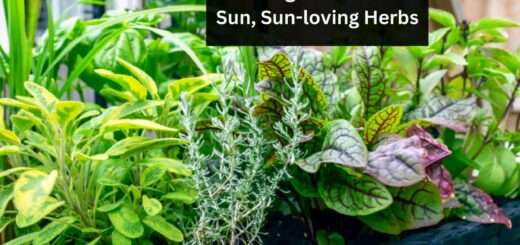9+ Beautiful and Tasty flowering Herbs for your Garden
Currently, I’m enjoying various flowering herbs in my garden that not only look beautiful but also taste delicious. You may be surprised to learn that many flowering herbs are not only beautiful but also edible, offering numerous benefits. Interested to know what these flowers are? Stay tuned to discover all the answers.
In this comprehensive guide, I’ve curated a list of stunning and flavorful herbs for your garden. Trust me, it consists of many benefits and all that I have explained so according to your choice select the herbs that are more useful to you. So let’s explore some beautiful and tasty flowering herbs for your garden.
Quick takeaways:
- There are various tasty flowering herbs for your garden such as chives, dill, sage, spearmint, rosemary, hyssop, bee balm, lavender, and many more explained below.
Best beautiful and tasty flowering Herbs for your Garden
Here are the beautiful yet super tasty flowering herbs that you can plant in your garden.
Herbs with pink flowers
1. Echinacea
- They have coneflowers and so are called purple coneflowers
- Height: 4 feet
- Zone– 3 to 9
- Belong to the daily family
- The flowers are extremely beautiful with a pinkish shade and have an orangish uplifted center
- The plant grows well in moist soil that is properly irrigated and drained too
- Stems are erect and the leaves are hairy to touch
- You will witness flowers from summer to fall season.
- Flowers are edible and mostly used for medicinal purposes curing flu, cold-related problems, skin allergies, etc.
- Used in tea as well
2. Spearmint
- Zones– 4 to 11
- Spearmint is a herb that belongs to the mint family
- Also called lamb mint, mackerel mint, and common mint.
- Height: 12-39 inches tall
- Spearmint also does great in making herbal teas, making scents, etc.
- The flowers are a light shade of pink color and are tubular to bell-like.
- They are ideal to grow in a big space or pots.
- The essential oil extracted from the flowers is highly useful in making soaps, toothpaste, etc.
3. Chives
- Height: 12-20 inches tall
- Zones: 3 to 9
- Chives belong to the allium group
- Produce the edible leaves and flowers
- Chives grow well in the good sun whether indoors or outdoors
- The plants have good insect-repelling abilities and are perfect for companion planting as well
- The flowers are usually used in salads or garnishing
- The leaves are flavourful and used in omelets, and many Asian dishes.
- The flowers look really elegant in the garden and are a shade of pinkish purple.
Herbs with red flowers
4. Pineapple sage
- Zones: 8 to 11
- Height: 5 feet tall
- The scarlet red flowers that are tubular are usually seen in the late season
- Many hummingbirds keep hovering around the pineapple sage plants
- The plant cannot tolerate the frost season
- Known for its pineapple aroma
- It is used for many medicinal uses like healing anxiety, and antidepressants, good for the nervous system.
- Can be used in tonics for digestion, heartburn, etc. The pineapple sage is also beneficial to add in teas, soups, etc.
5. Thai basil
- Zones: 10-11
- Height: 45cms
- The flowers are present in the form of long spikes that are in the shade of reddish-purple
- Thai basil has a pleasant aroma but it becomes mild as the flowers begin to appear
- One of the varieties of sweet basil has a licorice-like flavor that’s why it’s called licorice basil too.
- Thai basil is a tender perennial type, sturdy and compact. Though the plant is grown annually as well.
- They are widely used in the dishes of Asians and Vietnamese like noodles, soups, pork, etc.
6. Bee balm
- Zones: 3-9
- Height: 10-35 inches tall
- Bee balm has beautiful flowers that have a citrus-like aroma
- The flower appears in a shade of red, purple, and pink and looks fuller attracting bees and hummingbirds in the garden.
- The bee balm is used in salads, tea, jellies, desserts, etc.
- The plant needs full sun and moist detained soil but doesn’t like high humidity which can cause problems like powdery mildew.
Herbs with blue flowers
7. Hyssop
- Zones: 3-11
- Height: 18-23 inches tall
- Hyssop plants are used in making many herbal medicines that are used to cure cough, antiseptic ointments, etc.
- The flowers are bluish to purple and both leaves and flowers are edible
- They attract a lot of pollinators and bees to the garden.
- Hyssop is also used in dishes like kinds of pasta, soups, desserts, etc.
- Usually, the leaves of hyssops need to be removed as they are hard to eat.
8. Gentian
- The gentian plants have large flowers that are trumpet-shaped and intense blue-colored.
- These are wildflowers and are easy to grow
- The roots of gentian are used in many strips and making medicines
- The flowers are really attractive and bring a lot of hummingbirds to the garden
- Gentiana flowers have digestive properties as well and are used in making liquors, bitters, etc.
Herbs with yellow flowers
9. Dill
- Zones: 3-11
- Height: 4-8 inches tall
- The stems are long and hollow. Flowers are yellow to white colored and look aesthetic
- The leaves and seeds of dill plants are widely used as a spice in many dishes in Asia as well as in European countries
- Dill dives out the flavor well when used freshly wicked from the plants as compared to when dried.
Herbs with purple flowers
10. Sage
- Zones: 3-11
- Height: 12-14 inches tall
- Sage is a herb that is easy to grow and gives purplish flowers
- Blossoms bloom the whole summer season
- They are also called garden sage, common sage, and kitchen sage.
- They have a savory to peppery flavor and go well with the other herbs
- The sage leaves, stems, and flowers are equally edible and used in making sauces, Italian cuisines, garnishing, flavoring, etc.
11. Rosemary
- Zones: 7-9
- Height: 3-5 feet tall
- The leaves are pointed and the flowers are purple-colored.
- Rosemary is drought resistant and easy to care for, needs little maintenance
- The leaves are used in roasting meats, adding flavors to the dishes.
- The flowers attract many bees and pollinators
12. Lavender
- Zones: 5 to 9
- Height: 20-24 inches tall
- The lavender plant has beautiful purple blossoms and is known for its sweet aroma
- The lavender plants belong to the mint family
- Flowers and leaves are edible and can be used for garnishing, teas, etc. The plant parts can be dried and used as well.
- The plant can be grown from the seeds as well as cut.
How to care for flowering herbs?
- Keep the soil well-drained, and add sand to the soil if possible that will improve the drainage
- Provide 6 to 8 hours of full sun to the herbs
- Avoid over-watering the plants. Water when the soil gets too dry
- Give fertilizer only during the growing season, and avoid giving too much nitrogen into the soil
- Pinch the herbs one to two times a month. When needed do light pruning or pinching every other day
- Don’t let the weeds surround the herb, remove the weeds as soon as possible
Wrapping up the context
The herbs are full of flavors and so are the flowers. They literally enhance the flavor of any dish. Many flowering herbs yield beautiful flowers that look too attractive in the garden while they work as a herb. The flowers are perfect for garnishing, use in salads, kinds of pasta, etc. Read the details in deep, written above, and know everything about them. We hope you liked the information in the article and have made a choice to plant one.
Happy planting!


